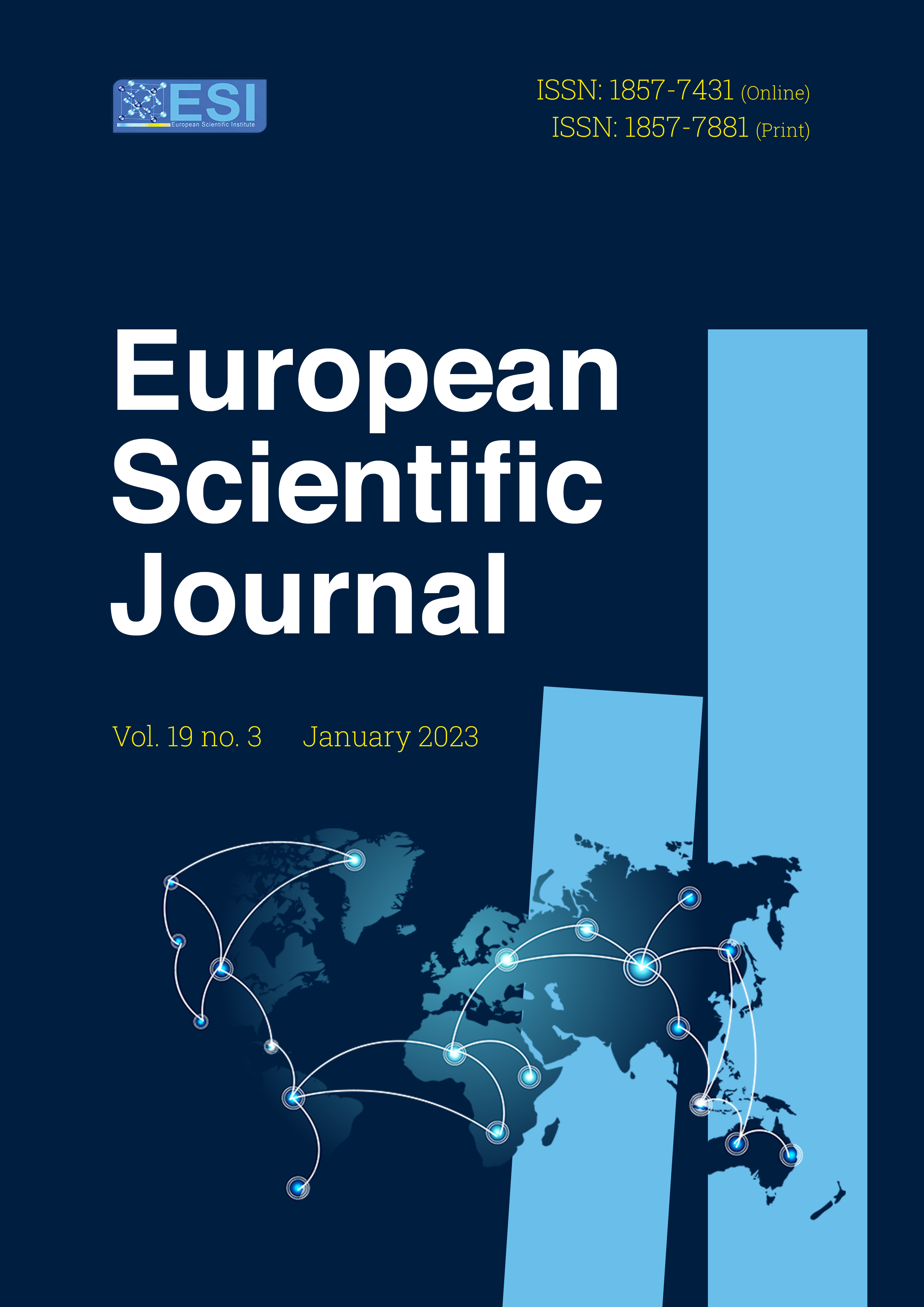Degree of Physical Activity in University Teachers Before and During the COVID-19 Pandemic
Abstract
The objective of this work was to analyze the degree of physical activity of university teachers before and during the Covid-19 pandemic, this in the context of social isolation. The present study adopts a quantitative and cross-sectional approach. The sample was determined randomly, made up of 129 university professors from the Faculty of Physical Culture Sciences of the Autonomous University of Chihuahua, aged between 18 and 74 years. The results show that 50.39% of teachers before the pandemic maintained a high degree of physical activity, while during confinement they presented a lower degree of physical activity, decreasing to only 39.53%. The Covid-19 not only wreaked havoc on health, but also negative effects in the psychological, emotional and social sphere of people, as well as havoc in the practice of physical activity, modifying healthy lifestyles and leaving possible effects for the consequent physical health.
Downloads
Metrics
PlumX Statistics
References
2. Baena, S., Tauler, P., Aguiló, A., & García, O. (2021). Physical activity recommendations during the COVID-19 pandemic: a practical approach for different target groups. Nutrición Hospitalaria, 38(1), 194-200.
3. Brooks, S. K., Webster, R. K., Smith, L. E., Woodland, L., Wessely, S., Greenberg, N., & Rubin, G. J. (2020). The psychological impact of quarantine and how to reduce it: rapid review of the evidence. The Lancet, 395(10227), 912-920. doi:10.1016/S0140-6736(20)30460-8
4. Camacho, A., Camacho, M., Merellano, E., Trapé, Á., & Brazo, J. (2020). Influencia de la actividad física realizada durante el confinamiento. Revista Española de Salud Pública, 94(12), 1-9.
5. Carrera, Y. (2017). Cuestionario Internacional de Actividad Física (IPAQ). Revista Enfermeria Del Trabajo, 7(11), 49-54. doi:10.1016/j.nefrol.2016.11.002
6. Cossio-Bolaños, M. A. (2021). Factores que ayudan a la práctica de actividad física en cuarentena. Revista peruana de ciencias de la actividad física y del deporte, 8(3),1169- 1170.
7. Craig, C. L., Marshall, A. L., Sjöström, M., Bauman, A. E., Booth, M. L., Ainsworth, B. E., & Oja, P. (2003). International physical activity questionnaire: 12-country reliability and validity. Med Sci Sports Exerc, 35(8), 1381-1395. doi:10.1249/01.Mss.0000078924.61453.Fb
8. Cruz-Ausejo, L., & Vera-Ponce, V. (2021). Actividad física y aplicaciones móviles, recomendaciones para el trabajador remoto durante la pandemia por SARS-CoV-2. Revista Brasileira de Medicina do Trabalho. 19. 406-08. 10.47626/1679-4435-2021-725.
9. Curay, P.(2021). La actividad física como factor preventivo del COVID-19 en el adulto mayor. Obtenido de Polo del Conocimiento: Revista científico-profesional, 6(6) 713-729. https://dialnet.unirioja.es/servlet/articulo?codigo=8016968
10. Di Blasio, A., Di Donato, F., & Mazzocco, C. (2016). the automatic calculation of data from IPAQ (Version Excel) [Sofware PC]. Endocrinology Unit, Department of Medicine and Aging Sciences, G. d'Annunzio University of Chieti-Pescara, Italy.: IPAQ. Retrieved from https://docs.google.com/a/uach.mx/viewer?a=v&pid=sites&srcid=ZGVmYXVsdGRvbWFpbnx0aGVpcGFxfGd4OjliNTAxOTlhNmE5OGVmZA
11. Flores, A., Coila, D., Ccopa, S., Yapuchura, C. R., & Pino, Y. M. (2021). Actividad física, estrés y su relación con el índice de masa corporal en docentes universitarios en pandemia. Revista de Investigación en Comunicación y Desarrollo, 12(3), 175–185 doi:10.33595/2226-1478.12.3.528
12. Gallegos, C., Esparza, V., Poblete Valderrama, F., Carrillo-Sánchez, L., Mena, Q., Chaparro, B., & Juan, R.-H. (2020). Hábitos de actividad física y estado de salud durante la pandemia por COVID-19. Espacios, 41(42), 1-10. https://doi.org/10.48082/espacios-a20v41n42p01
13. García-Tascón, M., Mendaña-Cuervo, C., Sahelices-Pinto, C., & Magaz-González, A. M. (2021). Repercusión en la calidad de vida, salud y práctica de actividad física del confinamiento por Covid-19 en España. Retos, 42, 684-695. doi: https://doi.org/10.47197/retos.v42i0.88098
14. Gómez-Montón, F., & Royo-Sancho, R. (2020). Actividad física, hábitos saludables e impartición de clase por docentes de educación física durante el confinamiento. Actividad física y deporte: ciencia y profesión, 33, 37-55.
15. González, R. (2021). Deporte, bienestar y la pandemia del covid-19. Nota técnica Conferencias interamericana de seguridad social. Mexico.
16. Mateu, P., & Rodrigues Marques, R. F. (2020). Ejercicio físico en tiempos de aislamiento social: Una reflexión bourdieusiana sobre gustos y distinción. Sociología Del Deporte, 1(1), 51–60. https://doi.org/10.46661/socioldeporte.4935
17. Ortiz, J. E., & Villamil, A.(2020). Beneficios de la práctica regular de actividad física y sus efectos sobre la salud para enfrentar la pandemia por Covid-19: una revisión sistemática. Revista del Centro de Investigación de la Universidad La Salle, 14(53), 105-132 doi:https://doi.org/10.26457/recein.v14i53.2679
18. Sánchez-Villena, A. R., & De La Fuente-Figuerola, V. (2020). COVID-19: cuarentena, aislamiento, distanciamiento social y confinamiento, ¿son lo mismo? Anales de Pediatría, 93(1), 73-74. doi:10.1016/j.anpedi.2020.05.001
19. Sandín, B., Valiente, R. M., García-Escalera, J., & Chorot, P. (2020). Impacto psicológico de la pandemia de COVID-19: Efectos negativos y positivos en población española asociados al periodo de confinamiento nacional. Revista de Psicopatología y Psicología Clínica, 25(1), 1–22. https://doi.org/10.5944/rppc.27569
20. Wilder-Smith, A., & Freedman, D. (2020). Isolation, quarantine, social distancing and community containment: pivotal role for old-style public health measures in the novel coronavirus (2019-nCoV) outbreak. Journal of Travel Medicine, 27(2). https://doi.org/10.1093/jtm/taaa020. doi:10.1093/jtm/taaa020
Copyright (c) 2023 Silvia Isela Ramírez Enríquez, Juan Cristóbal Barrón Luján, Leopoldo Refugio López Baca, Luis Alberto López Rodríguez, Gilberto Santos Sambrano, Alicia Rodríguez Gill

This work is licensed under a Creative Commons Attribution-NonCommercial-NoDerivatives 4.0 International License.








